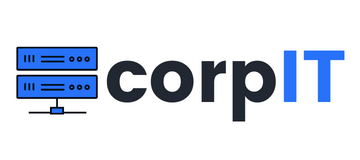This article will talk about the important topic about the storage that is Raid. This article will also see how we can use the raid and its benefits and downside.
Table of Contents
What is Raid
Raid stands for the Redundant array of independent Disk. We use raid to save the data in any type of drive failure. In raid instead of data going and storing in a single hard drive, data is spread across the different drives. So in any case of hardware failure will recover the data. Will see how that works in going ahead in the article. Raid also increases the performance of the drives as the data is in chunks out and distribute among the drive.
The benefit of Raid?
- It’s a great solution for a fault tolerance
- There is a variety of the raid level that you can use as per your environment need
The downside of Raid?
- It’s a bit of a costly solution
Types of Raid
Software Raid
In the best and the cheap solution for your Raid need. All the algorithm is calculated by the system process only and based on that data is stored in the different drives. Most people are using software raid only and all the OS will support the raid.
Hardware Raid
This is a more complex thing, where you need not engage your CPU processing for the raid calculation. You can use one of the Raid controllers. It will only take care of all the processing for the raid outside form the processor. Most of the enterprises will use the hardware raid.
Levels of Raid
Raid 0
It is one of the simplest RAID storage designs. It utilizes the data striping( in this process data is segmented and based on that data in stored the redundant drive).

Minimum Drive required -> 2
Advantages of the RAID 0
- A great solution for performance.
The downside of RAID 0
- No redundant
Raid 1
It is one of the raids which is best for redundancy. A similar data is a store across 2 drives. It makes a disk mirroring.

Minimum Drives required -> 2
Advantages of Raid 1
- Fault tolerance and easy data recovery
The downside of Raid 1
- Low capacity.
Raid 3
It is one of the approaches where we stored data in 2 drives and we put the parity in 1 drive. so it is also known as a stripe set with dedicated parity.

Minimum Drive required -> 3
Advantages of Raid 3
- High speed for sequential read and write.
- A single drive failure will rebuild.
The downside of Raid 3
- It all depends on the parity drive, if it fails system fails.
Raid 5
It is one of the important raid use in many enterprise applications. Here we have a minimum of 5 drives where parity is distributed across all 5 drives. here in case of any drive fails we can rebuild it from the remaining drives. It is also known as a Striped disk with the distributed parity.

Minimum Drive required -> 5
Advantages of Raid 5
- It can handle single Drive Fault tolerance
- It has a Large Size
The downside of Raid 5
- Lower performance as most of the process goes into the parity overhead
Raid 6
It is the same as Raid 5 but there we have double parity.

Minimum Drive required -> 4
Advantages of Raid 6
- It can handle Double Drive Fault tolerance
The downside of Raid 6
- Lower performance as most of the process goes into the parity overhead
Raid 10
Here we add the 2 popular raid levels Raid 1 + Raid 0 so here we get the benefit of Raid 0 striping and Raid 1 mirroring.

Minimum Drive required -> 4
Advantages of Raid 10
- Very High performance
- Fault tolerance
The downside of Raid 10
- Lower Capacity




